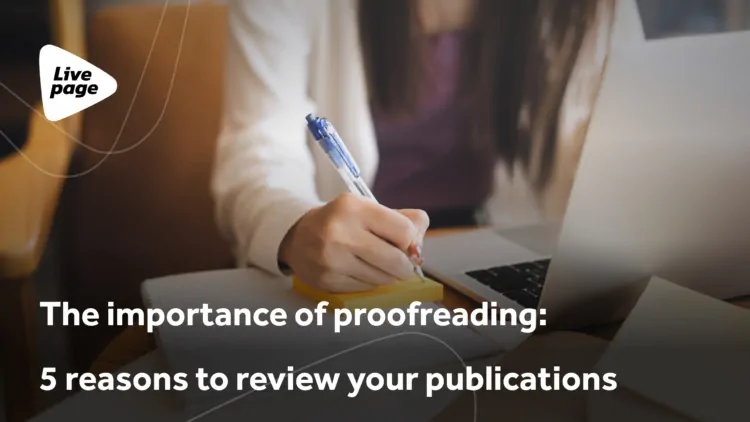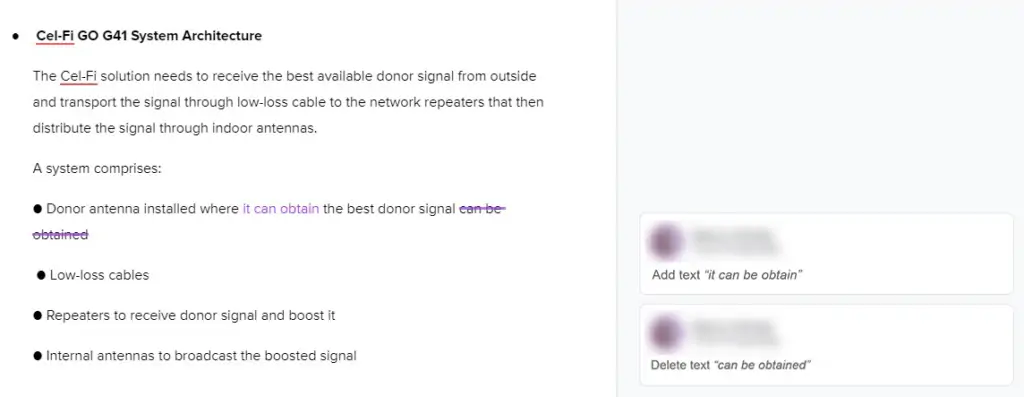
The importance of proofreading: 5 reasons to review your publications

The ability to write well is an outstanding skill; however, it is a challenging task to make a flawless piece, even for experienced writers.
As a company that deals with content creation on a daily basis, we are eager to deliver a perfectly written article every single time. Therefore, we know how it feels to be concerned about meeting the client’s expectations when the write-up is being handed over for an appraisal.
So, good writing requires both editing and proofreading before it enters the realm of online publishing. Let us find out what proofreading is and look at the differences between those two.
What is proofreading?
When you spend all day on research, come up with an idea, and then carefully put it down, trying to find better wording to get the reader interested, the last thing you want to notice is multiple typos you didn’t get rid of.
Yet, the most frustrating thing is to realize that the article has already been published, and there is nothing you can do to improve it. That’s why proofreading all written content is so important.
Proofreading is an essential part of content creation that verifies it is ready for publication. It is a process of checking for errors and other inconsistencies, including reading and correcting any mistakes in the text. Typically, proofreaders look for grammar, vocabulary, and spelling mistakes. Thus, they can address formatting and punctuation issues affecting the document’s perception.
To sum up, proofreading is the last stage of re-reading the article before it appears on the website, which helps to ensure the content is error-free.
Let us dive deeper into the differences between editing and proofreading.
Proofreading vs Editing
Many people consider editing and proofreading the same process, but they serve different purposes.
As it was mentioned earlier, proofreading is vital for content creation. Especially for an online business that publishes expert materials to attract the target audience. But how is proofreading different from editing?
The main difference between editing and proofreading is that proofreaders don’t rewrite entire sections of the article as editors do. Proofreaders’ task is to look only for specific errors, such as spelling or grammar issues, so we get the written work ready for publication.

On the contrary, the editor changes the wording to improve the readability and overall comprehension of a piece of writing. Editing is all about passing on the article’s main idea in the most simple and engaging manner.
All in all, if the text requires some structural changes or some parts need to be rewritten, it should be handed over to the editor, and only then should it undergo proofreading.
The importance of a proofreader
A proofreader is a professional responsible for the material’s finishing touches. Their task is to ensure the write-ups are ready to appear on the website. It means no spelling or grammar errors will slip through when an author submits the article for publication.
Some might think minor mistakes aren’t a big deal; however, even basic faults in the blog post or article may affect the credibility of the written material. Thus, you cannot overestimate the importance of a proofreader as an essential part of a content team who spots flaws in the writing. Proofreaders fix the article until it is clear of all errors.

The article cannot be considered high-quality writing if there are neglected errors left in it. And vice versa, flawless writing shows that a company cares about its product, so much so that they pay attention to every bit of information they post. This establishes a company’s authority in the eyes of readers and elevates its influence.
5 reasons to proofread your publications
If you believe proofreading is a waste of time, don’t jump to conclusions. When carried out professionally by specialized SEO proofreading services, it may make a considerable difference, significantly improving the writing style of your publications.
Remember, no one can generate an excellent article, so it’s only natural that proofreading is a crucial stage of content creation not to be skipped. Here are five reasons why.
1. It boosts the reading experience
It is disappointing when your readers focus on the typos rather than on the message you are trying to share, isn’t it? In order to avoid such an embarrassing situation, you must ensure the material published on your website is impeccable. So, if you want your audience to have a pleasant reading experience, proofreading is the best option to guarantee that.
2. It shows you care
Imagine you are working your guts out to blow the readers’ minds with some great writing that will showcase your product’s advantages. But after the write-up is published, all they notice is poor grammar and a lack of structure. Nobody would like the audience to discover those mistakes and, as a result, to have egg on their face. To avoid feeling sheepish and seeming indifferent, always proofread the text before exposing it to the public.
3. It helps to make a great first impression
Our writing is tightly bounded to how people see us. Readers tend to picture us as refined and polished if the text is polished. So it is vital to carefully pick every word and review the write-up prior to publishing it on a website. You don’t have a second chance to make a first impression.
4. It makes you stand out
Proofreading all written work will make you stand out from the crowd. Once the article is interesting, error-free, and well-structured, it is exciting to read, keeps the audience engaged, and ensures you and your readers are on the same page. So, eventually, all your efforts will pay off.
5. It indicates your trustworthiness
Building trust with your reader is one of the most important things in content creation. Your publications represent your attitude toward the audience, so needless to say, the written communication must be honest, crisp, and clear. No errors should overshadow the idea you are trying to spread or, what is worse – jeopardize your competence.
Therefore, proofreading is an essential part of a well-crafted article. The audience must know what you are getting at when reading your work: a careless word or misplaced commas can change the whole meaning of the text. Thus, the best and easiest way to pull it off is to review every piece of writing before publishing thoroughly.



















